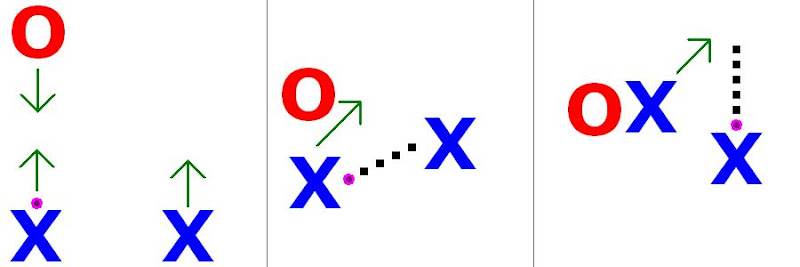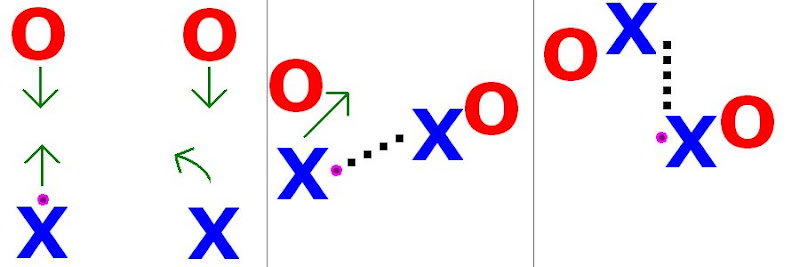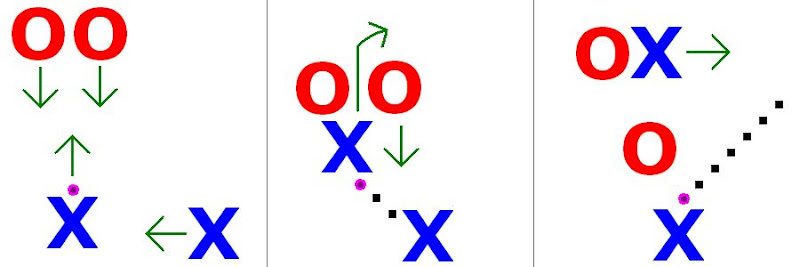Most of the girls on the team have made a couple appearances at practice, and more than half of the girls have a good feel for the game, good timing, and strong kicks. When we pair off for passing and shielding drills, Jim suggested putting the stronger girls with the less experienced ones, so that the strong girls could get a feel for leadership, and the less experienced ones could have a good example to follow, and not get left behind.
The parents have all been friendly, and I haven't felt any bad vibes off of anyone. I'm getting a feel for the loneliness of trying to organize events with busy people. I'm getting about a 33% reply rate to my emails from the team parents, even from those emails that say "please reply and say if you're available for X". Of course, I was guilty of that on the other side of the fence, and often went a week without checking email, and only found out about special events at the last second, or missed them entirely.
The girls are eager to please, funny, and also quick to socialize with each other when they have a minute or two of downtime. Their ideas for team mascot have been great: Flaming Balls of Death, Flaming Millenniums, Flaming iPods (notice a theme?), and the Hot Chili Peppers... since our team color is red, that would make us the Red Hot Chili Peppers. My idea of the Red Pandas was rejected outright, sadly.
We've gone over some basic drills, and I'm getting a feel for everyone's attention span, and how complex you can make a drill before the girls lose interest. I say "lose interest" because they are all smart enough to follow instructions that are arbitrarily complicated, but too hard = less fun. Since they all volunteered to play, they expect to have a lot of fun, and not a lot of lectures and story problems. So, I aims to please. Here are the drills that seem to work OK:
1 – An attacker with the ball approaches a defender. As the defender gets close, the attacker will stop the ball and put her body between the ball and the defender.
2 – The defender will move to steal the ball, and when she does so, the attacker moves the ball the other way.
3 – Ideally, the defender and attacker are then close to side by side, with the ball still shielded. Now the attacker can dribble upfield at an angle to pass the defender.

Of course, the above drill only works if the defender does something she shouldn’t during match play: let an attacker get goalside. If the defender is patient and doesn’t take the bait, then the attacker will need some help from a teammate, hence the next drill.
1 – Like the shielding drill, an attacker with the ball approaches a defender. This time a second attacker runs parallel.
2 – The attacker with the ball passes to her teammate as the defender approaches, then sprints upfield.
3 – When the teammate receives the ball, she immediately passes it back to the attacker, who is now goalside of the defender.

Timing is important here. Notice in the last panel the pass is to where the teammate is running to, not where she currently is. Passing to a running teammate, and shielding from the previous drill, are skills that will improve the girls’ games, skills they will take with them as they move up to middle school play.
As the girls get more confident and practiced at this basic give and go play, something more realistic to match play can be introduced: a second defender. We practice two basic approaches, the defenders are split, and the defenders are concentrated. The simple strategy against split defenders is to keep them split.
1 – Two attackers run towards two defenders playing man-to-man defense. The attacker without the ball cuts over to stay between the ball and her defender.
2 – As the attacker with the ball approaches her defender, she passes to her open teammate, then sprints up field.
3 – Like the last drill, when the teammate receives the ball, she immediately passes it back to the attacker, who is now goalside of the both defenders.

This play requires good cooperation from the two attackers. We practice first with the defenders running in slow motion, concentrating on timing the passes, and getting used to what the play is supposed to look like. After the girls are familiar with what they are supposed to do and getting a good success rate with the drill, we have the defenders speed up to make it more realistic to a match setting.
When defenders team up in a two on one situation, we reintroduce ball shielding, and add the back-pass. The goal of the give and go against a 2-on-1 is to draw one of the defenders away, and to beat the other with foot speed.
1 – The attacker with the ball approaches two defenders, and shields the ball from them on the approach. Knowing you can’t shield very long against two defenders, she looks for a back-pass. Her team mate slides over to receive it.
2 – The attacker back-passes to her teammate, and then sprints through the defenders. If both defenders stay with her, the pass recipient can dribble upfield unchallenged. If a defender is drawn off, the ball carrier can look for an angled pass upfield before the defender reaches her.
3 – The attacker moves across field quickly to receive a return pass. The teammate with the ball return passes upfield at an angle to where the attacker is running.

This play is hard, and is as complicated as I want drills to be. Drills should use a minimal number of players, have simple goals, and have a high success rate. "Get the ball upfield", "pass to the running player", "back-pass, then run upfield", these are good things to work on for this age group that translate into improved match play.
Other things we work on are basic shooting, trapping, tackling (the ball, not other players), and dribbling, all of which the girls already understand. More practice on the basics = doing them more naturally during a match.
So, we're having fun, and I get to experiment with plays and motivating players in a competitive game, both of which are new to me. What will the season bring victory-wise? Will we have a winning record? Be the best in our league? I don't know, but one thing's for damn sure: we're going to have a good time.
No comments:
Post a Comment